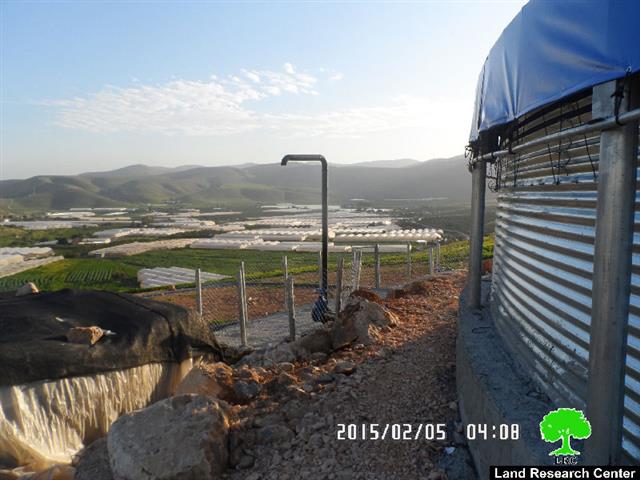Violation: serving a stop-work order
Date: 02/02/2015
Location: Palestinian Jordan Valley
Perpetrators: Israel Planning Committee
Victims: resident of the village
Details:
The so-called Israel Planning and Construction Committee handed the village council of Furush Beit Dajan out a military order compelling construction halt on a water tank in the southwestern side of the village.
According to the order, the occupation army gave the village council a deadline until February 16, 2015 to complete all licensing procedures; this comes in time with the hearing session of the Planning Committee in the Israeli court of Beit El to consider the status of the notified structures. The following table lists information about the notified structure:
|
Nature of the structure |
Volume m3 |
No. of order |
Implementing body |
Beneficiaries |
Photo |
|
A water tank |
500 |
|
|
It should be marked that the new water tank has been recently implemented by Palestinian Hydrology Group to become a crucial tool to support the water sector in the village, which in this regard is suffering from water sacristy. The Israeli occupation put hand on all water sources in the area and is now selling water to Palestinian after being originally theirs.
Noteworthy, the village of Beit Dajan has five artisan cisterns namely( al-Ibaisi , Beir Shahin, Beir Abdeljalilm Beir al-Shak'a, and Beir al-Masri). The aforementioned pumps around 80m3 per hour but that is still not enough to meet the area's need for water. It should be marked that the water quantity in the cisterns is notably decreasing since the occupation dug new ones in the area.
The idea behind the water tank is to manage water in the village to best benefit all collected water and fairly re-distribute it on residents.
About Furush Beit Dajan:
It is located in the middle of Palestinian Jordan Valley and is considered an extension of Beit Dajan village, east of Nablus. It has a total population of 1500 people, 50% of which descend from Bedouin origins; sheep grazing and agriculture are the main sources of income for such people
The village has a total land area of 14000 dunums; the occupation confiscated 12000 dunums of it for the sake of establishing the colony of al-Hamra in the western side of the village, the colony of Mekhora in the southern part and a military camp in the eastern side of it.
The village lacks a master plan; a thing that allowed dozens of residences to be notified by the occupation in addition to other dozens that were demolished as a result.
The village has about 450 dunums of protected vegetables and 1600 dunums of citrus plantation.
Prepared by
The Land Research Center
LRC














